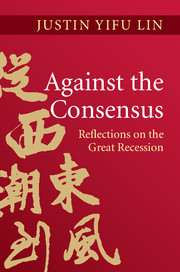Book contents
Part IV - Toward a Brave New World Monetary System
Published online by Cambridge University Press: 05 June 2013
Summary
The global financial crisis of 2008–9 originated in the international monetary system. Part I argued that global imbalances arose from the wealth effect of the excess liquidity created by US financial deregulation and monetary policy. These imbalances could be as large as they were and last as long as they did because the US dollar was the major reserve currency. The United States creates reserves through its current account deficit and capital outflows.
The financial crisis highlighted major deficiencies in the international monetary system. Although the system weathered the initial shock, it remains fragile. Before World War II the global economy had been rocked by periodic payments crises. After the war industrial economies focused on reconstruction, and, with the memory of the prewar depression still fresh, policymakers created new institutions to oversee international transactions. Referred to as the Bretton Woods system, these new institutions were designed to promote growth and stability in international trade and finance. For nearly two decades the system relied on fixed exchange rates based on gold. Since the early 1970s, however, when the United States stopped trading gold at the fixed price of $35 an ounce, global economic governance has been characterized as one of “benign neglect.” Countries follow their own monetary and exchange rate regimes, and the US dollar has established itself as the predominant international reserve currency.
- Type
- Chapter
- Information
- Against the ConsensusReflections on the Great Recession, pp. 145 - 148Publisher: Cambridge University PressPrint publication year: 2013



